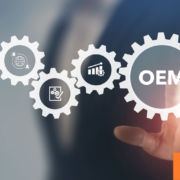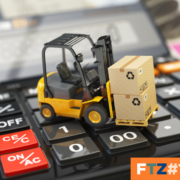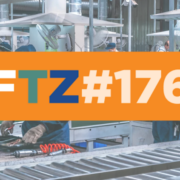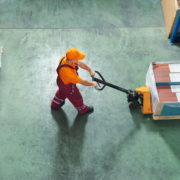Manufacturers: Use FTZ to Become More Valuable to your OEM Customers
Manufacturing supply chains are extremely competitive. As many original equipment manufacturers (OEMs) use foreign trade zones (FTZs) to reduce costs, you can gain an advantage over competitors, especially overseas competitors, by activating your facility as an FTZ.
When you become an FTZ, you remove the footprint of your operation from U.S. customs territory, deferring the payment of import tariffs. Instead of import tariffs being due upon entry into the United States, tariff payments are due upon entry into U.S. customs territory (upon sale to a non-FTZ customer).
Why are so many OEMs FTZs? Many OEMs in the heavy equipment industry (for example) operate FTZs because heavy equipment often has a 0 percent import tariff. This means someone can import a tractor from abroad and pay a 0 percent tariff.* However, OEMs that assemble tractors in the United States must pay tariffs on imported components, such as hydraulic sub-assemblies. This makes domestically assembled tractors more expensive than an imported tractor, because of the cost of tariffs on sub-assemblies. If activated as an FTZ with production authorization, then tractor assembly operations can defer the tariff on hydraulic sub-assemblies and sell tractors to the U.S. market with the final duty rate of 0 percent applied. The tariff on hydraulic sub-assemblies is converted into the tariff on the final product: 0 percent. This maintains the competitiveness of U.S. manufacturing, keeping final assembly viable in the United States compared to overseas assembly.
What if you are a manufacturer of hydraulic sub-assemblies in the United States, and you import your hoses from Europe? How do you maintain your position your customer’s supply chain, when facing competition both domestically and from overseas? You can activate your facility as an FTZ and transfer your product via zone-to-zone transfer to your OEM customer. In this case, the product has never entered into U.S. customs territory, and your imported components are also converted into the final 0 percent tariff rate of the tractor. You have saved your customer the cost of the import tariff of your hoses. This makes your products more cost competitive to non-FTZ domestic competitors and reduces the risk of a foreign competitor having a cost advantage over your products.
Bottom line: Activate your facility as an FTZ to maintain a competitive advantage over competitors domestically and internationally, especially in key FTZ industries such as heavy equipment. Non-FTZs are at greater risk of being displaced by FTZs or overseas competition. Show your customer you are committed to partnership by talking to them about their FTZ operation, and how a zone-to-zone transfer might reduce your collective costs.
In northern Illinois, FTZ #176 encompasses 11 counties running from LaSalle-Peru, Illinois and north up to the Wisconsin state line. Distribution companies within that region have the ability to lower costs and boost their competitive edge by becoming part of the zone.
*Excluding product and components subject to Section 301 or Section 232 tariffs, or other intentional federal policy measures restricting imports of a specific product or country of origin.
To learn more about how FTZ #176 can help you gain a competitive edge, call 312-221-1115 or contact us online.





